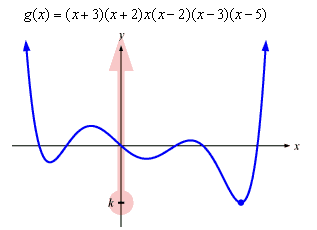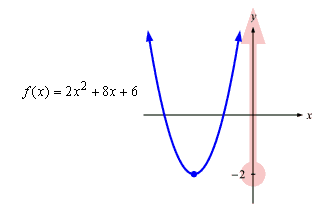How to Find the range of a function ?
Sigh. Students ask me this all the time. They don't want an explanation, they want a procedure. "Tell me the steps!"
Unfortunately, there is no step-by-step procedure. The only way to answer this question is first to have an understanding of what range means, and then to examine the function and try to understand it. This usually means graphing the function. By the way, if you're not sure what "range" means, then click on the basics button.
Now, usually the only way to find the range of a function is to graph it (or at least, visualize the graph in your head). In the graph, the range is the set of y values (not x values) through which the graph passes.
Example 1

For example, this function's graph is a parabola:

The range is shown in red on the y-axis: it consists of all real numbers greater than or equal to -2. You can see that the range matches the vertical extent of the graph: y = -2 is the lowermost point of the parabola.
But you wouldn't know this unless you knew how to find the vertex of the parabola. This is what I mean by "having an understanding of the function." Each function is different, and it usually requires some thought to figure out what the range is. Sometimes, it is very difficult. Take a look at this next example: